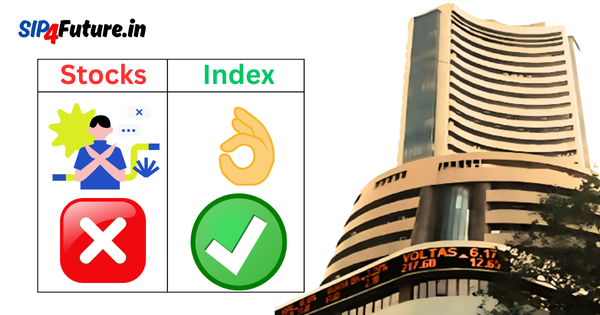Adani Green Energy Ltd (AGEL) has solidified its position as a leader in India’s renewable energy sector with its impressive FY25 financial results. The company reported a 23% surge in revenue from power supply, reaching Rs. 9,495.00 crores, while its EBITDA climbed 22% to Rs. 8,818.00 crores, surpassing the $1 billion mark. This article dives into AGEL’s performance, its strategic expansions, and the broader implications for India’s decarbonization journey, global market trends, and government policies shaping the renewable energy landscape.
What Drives Adani Green Energy’s FY25 Success?
Adani Green Energy’s FY25 results reflect its relentless focus on scaling renewable energy capacity and operational efficiency. The company expanded its operational renewable energy capacity by 30%, reaching 14.20 GW, with an addition of 3.30 GW of greenfield capacity. This growth is underpinned by strategic investments in cutting-edge technologies and a commitment to India’s clean energy goals.
On April 28, 2025, AGEL’s stock price on the National Stock Exchange (NSE) rose by 3.12% to Rs. 941.00, reflecting investor confidence in its robust financials. According to Moneycontrol, the stock experienced a surge in trading volume, signaling strong market interest. AGEL’s cash profit also grew by 22% to Rs. 4,871.00 crores, showcasing its ability to generate sustainable cash flows.
| Financial Metrics | FY25 (Rs. Crores) | YoY Growth (%) |
|---|---|---|
| Revenue from Power Supply | 9,495.00 | 23% |
| EBITDA | 8,818.00 | 22% |
| Cash Profit | 4,871.00 | 22% |
How Technology Fuels AGEL’s Growth
AGEL’s adoption of advanced technologies, such as bifacial solar modules and AI-driven energy management systems, has enhanced its operational efficiency. These innovations are particularly evident at the Khavda renewable energy park in Gujarat, where AGEL has operationalized 4.10 GW of capacity. The company is leveraging data analytics to optimize energy output, reduce downtime, and improve grid integration, aligning with global trends in smart energy solutions.
How Does Khavda Shape the Future of Renewables?
The Khavda project, touted as the world’s largest renewable energy plant, is a cornerstone of AGEL’s ambition to reach 30 GW by 2029. Located in Gujarat’s salty desert, Khavda is ideal for large-scale solar and wind projects due to its minimal environmental impact. Posts on X highlight Khavda’s strategic importance, noting its proximity to the Pakistani border and its role in transforming barren land into a clean energy hub.
AGEL’s roadmap for Khavda includes a mix of solar, wind, and hybrid energy systems. By 2030, the company aims to scale its total capacity to 50 GW, contributing significantly to India’s target of 500 GW of non-fossil fuel capacity. This aligns with the Ministry of New and Renewable Energy’s vision for a decarbonized energy sector.
What Role Do Government Policies Play?
India’s renewable energy sector has benefited from supportive government policies, such as the Production Linked Incentive (PLI) scheme and the National Green Hydrogen Mission. These initiatives have encouraged investments in solar and wind energy, directly impacting AGEL’s growth. The government’s decision to waive transmission charges for renewable energy projects until 2030 has reduced operational costs for AGEL, boosting its profitability.
However, recent geopolitical tensions, including India-Pakistan relations, have introduced volatility in the Indian stock market. According to CNBC TV18, the Nifty 50 is expected to consolidate before its next move, partly due to external factors like the U.S. Federal Open Market Committee (FOMC) decision on May 7, 2025. Despite these challenges, AGEL’s focus on domestic renewable energy projects shields it from some global uncertainties.
What Is the Global Market Impact on AGEL?
The global renewable energy market is witnessing unprecedented growth, driven by rising demand for clean energy and stricter carbon regulations. According to the International Energy Agency (IEA), global renewable capacity is expected to grow by 50% between 2024 and 2030. AGEL’s expansion aligns with this trend, positioning it as a key player in the global transition to green energy.
AGEL’s stock performance is also influenced by global market dynamics. The weakening U.S. dollar, as noted by The Economic Times, has bolstered investor sentiment in Indian markets, benefiting stocks like AGEL. Additionally, foreign institutional investors (FIIs) have shown mixed behavior, with a slight reduction in holdings in some Adani Group companies but increased mutual fund interest in AGEL, rising to 1.01% in Q4FY25 from 0.37% in Q3FY25.
How Do Sectoral Trends Influence AGEL’s Stock?
The renewable energy sector in India is a bright spot amid broader market fluctuations. While financial stocks like Axis Bank faced challenges due to asset quality concerns, renewable energy stocks have remained resilient. AGEL’s inclusion in key indices, such as the Nifty Total Market, underscores its significance in India’s stock market.
The company’s recent power purchase agreement (PPA) with Uttar Pradesh Power Corporation Limited (UPPCL) for 1,250 MW of energy storage capacity from pumped hydro storage projects has further boosted its stock price. This deal, executed by AGEL’s subsidiary Adani Hydro Energy Five Ltd, enhances its ability to provide reliable, round-the-clock renewable energy.
| Sector Impact | Key Developments |
|---|---|
| Renewable Energy | 30% capacity growth, Khavda project |
| Financials | Mixed performance, AGEL resilient |
| Infrastructure | PPA with UPPCL for 1,250 MW |
When Will AGEL Reach Its 50 GW Target?
AGEL’s ambitious goal of 50 GW by 2030 is supported by its aggressive capacity additions and strategic partnerships. The company’s focus on hybrid energy systems, combining solar and wind, ensures higher capacity utilization factors (CUF). In FY25, AGEL reported a CUF of 24.7% for its solar portfolio and 34.5% for wind, reflecting operational excellence.
The Khavda project is expected to contribute 30 GW by 2029, with the remaining capacity coming from projects in Rajasthan, Tamil Nadu, and other states. AGEL’s partnerships with global technology providers, such as Siemens Energy, enhance its ability to deploy high-efficiency turbines and solar panels.
What Challenges Lie Ahead?
Despite its strong performance, AGEL faces challenges such as supply chain disruptions and rising raw material costs. The global semiconductor shortage and fluctuating polysilicon prices could impact solar panel production. Additionally, regulatory changes in India, such as stricter environmental norms, may require AGEL to invest in compliance measures.
Geopolitical risks, including tensions in the Middle East and U.S.-China trade disputes, could affect global commodity prices, indirectly impacting AGEL’s project costs. However, the company’s diversified portfolio and long-term PPAs provide a buffer against these uncertainties.
How Does AGEL Contribute to India’s Decarbonization?
AGEL’s growth is closely tied to India’s commitment to achieving net-zero emissions by 2070. The company’s renewable energy projects are expected to offset approximately 50 million tonnes of CO2 annually, equivalent to planting 1 billion trees. Its focus on water-positive operations by 2025-26, as highlighted in posts on X, underscores its commitment to sustainability.
AGEL’s efforts align with the Government of India’s renewable energy targets, including 50% non-fossil fuel capacity by 2030. The company’s investments in energy storage and green hydrogen position it as a pioneer in next-generation clean energy solutions.
What Are the Financial Implications for Investors?
AGEL’s stock has shown volatility, with a high beta of 1.8, indicating sensitivity to market movements. However, its long-term growth prospects remain strong. Emkay Global Financial Services has a ‘buy’ rating on AGEL, predicting a 50% upside from current levels. The stock is trading above its 5-day, 10-day, and 20-day moving averages, signaling positive momentum.
| Stock Performance | Details |
|---|---|
| Current Price (NSE) | Rs. 941.00 |
| YoY Growth (FY25) | 3.12% |
| Beta | 1.8 |
| RSI | 56.7 (Neutral) |
How Do Historical Returns Compare?
AGEL’s historical returns provide context for its growth trajectory. Over the past five years, the stock has delivered a compounded annual growth rate (CAGR) of approximately 35%, driven by capacity expansions and favorable government policies. In FY25 alone, the stock gained 8.76% year-to-date, despite market volatility.
| Historical Returns | Period | CAGR (%) |
|---|---|---|
| 1 Year | FY25 | 8.76% |
| 3 Years | FY22-FY25 | 28.50% |
| 5 Years | FY20-FY25 | 35.00% |
What Are Future Price Targets?
Research institutes remain optimistic about AGEL’s future. Emkay Global projects a target price of Rs. 1,425, implying a 50% upside. Motilal Oswal Financial Services estimates a target of Rs. 1,200, citing AGEL’s leadership in renewables and strong execution capabilities. However, analysts caution that global economic uncertainties and regulatory changes could impact short-term performance.
| Research Institute | Target Price (Rs.) | Upside (%) |
|---|---|---|
| Emkay Global | 1,425 | 50% |
| Motilal Oswal | 1,200 | 27% |
Conclusion
Adani Green Energy’s FY25 results underscore its pivotal role in India’s renewable energy transformation. With a 23% revenue increase, 30% capacity expansion, and the ambitious Khavda project, AGEL is poised to lead the global clean energy revolution. Supported by favorable government policies and growing investor confidence, the company is on track to achieve its 50 GW target by 2030. While challenges like supply chain disruptions and geopolitical risks persist, AGEL’s diversified portfolio and technological innovations provide resilience. For investors, AGEL offers a compelling blend of growth and sustainability, making it a stock to watch in the renewable energy space.
Disclaimer: The information provided in this article is for educational purposes only and should not be considered financial advice. Investing in stocks involves risks, and past performance is not indicative of future results. Readers are advised to consult with qualified financial advisors before making investment decisions.




